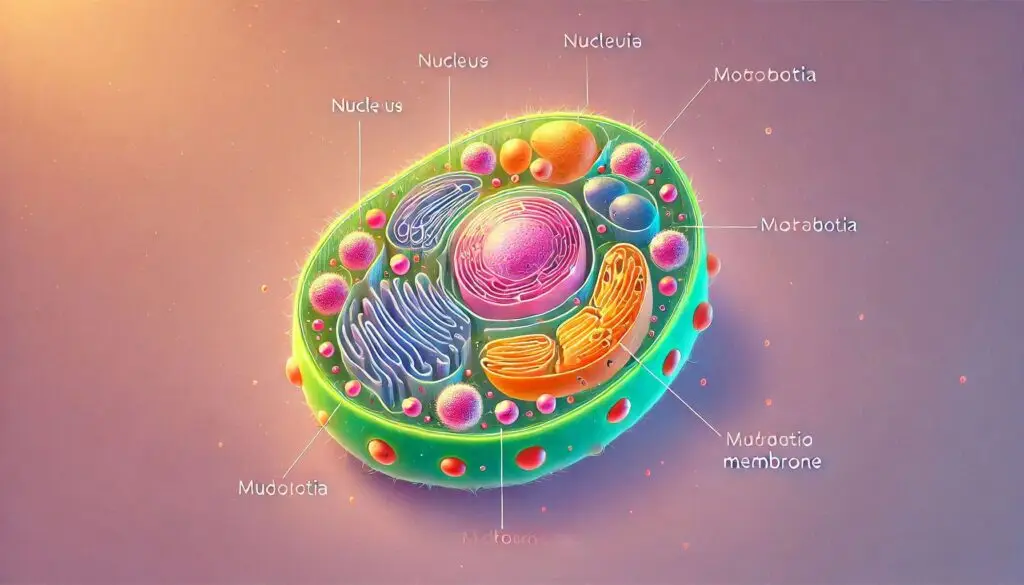Interphase in the Cell Cycle

Introduction to Interphase in the Cell Cycle
Interphase is a crucial phase in the cell cycle that prepares cells for division. This phase includes three distinct stages: G1 (Gap 1), S (Synthesis), and G2 (Gap 2). During interphase, cells grow, replicate their DNA, and perform essential metabolic functions. Understanding interphase is vital for grasping how cells divide and function properly. This article delves into the stages of interphase and their significance in cellular processes.
The Cell Cycle Overview
The cell cycle consists of two main phases: interphase and the mitotic phase (M phase). Interphase includes three stages: G1, S, and G2. Each stage plays a crucial role in ensuring that cells are ready for division.
Stages of Interphase
G1 Phase (First Gap)
The G1 phase marks the beginning of interphase. During this stage, cells grow in size and synthesize various proteins necessary for DNA replication. The cell also increases its organelle count and accumulates energy reserves.
- Key Activities in G1 Phase:
- Protein synthesis
- Growth of organelles
- Accumulation of energy
Cells that do not receive signals to divide may enter a resting state known as G0. In this state, they perform normal functions but do not prepare for division. For more information on G1 phase activities, visit Biology LibreTexts.
S Phase (Synthesis)
The S phase is where DNA replication occurs. Each chromosome duplicates to form sister chromatids, ensuring that genetic information is accurately passed to daughter cells.
- Key Activities in S Phase:
- DNA replication
- Duplication of centrosomes
During this phase, the amount of DNA doubles while the number of chromosomes remains constant. This process is crucial for maintaining genetic integrity during cell division. For more details on DNA replication during S phase, check out Wikipedia.
G2 Phase (Second Gap)
The G2 phase follows DNA synthesis and prepares the cell for mitosis. The cell continues to grow and produces proteins required for chromosome manipulation.
- Key Activities in G2 Phase:
- Energy replenishment
- Protein synthesis
- Preparation for mitosis
Cells undergo final checks to ensure they are ready for division before entering mitosis. For further reading on G2 preparations, refer to Khan Academy.
Importance of Interphase in Cell Division
Interphase occupies about 90% of the cell cycle duration. This extended period allows cells to complete essential tasks before division.
- Functions of Interphase:
- Growth and development
- DNA replication
- Metabolic activities
The accurate completion of each stage is crucial for successful cell division. Errors during interphase can lead to mutations or failed divisions, which may result in diseases such as cancer.
Checkpoints in Interphase
Cells have built-in checkpoints during interphase to monitor progress and ensure everything is functioning correctly.
G1 Checkpoint
The G1 checkpoint assesses whether conditions are favorable for division. If conditions are not suitable, the cell may enter G0 or delay progression.
S Checkpoint
During the S phase checkpoint, cells verify that DNA has been accurately replicated without damage.
G2 Checkpoint
Before entering mitosis, the G2 checkpoint ensures that all DNA has been replicated correctly and that there is no damage.
These checkpoints are critical for maintaining cellular health and preventing the propagation of errors. For more insights into checkpoints, visit BYJU’S.
Conclusion on Interphase
In summary, interphase is an essential part of the cell cycle that prepares cells for division through growth and DNA replication. Each stage—G1, S, and G2—plays a unique role in ensuring that cells are ready to divide successfully. Understanding these processes provides insight into cellular function and highlights the importance of maintaining healthy cellular activities.
For more pearls of Vets Wisdom:
Breeding Value in Dairy Animals





Responses